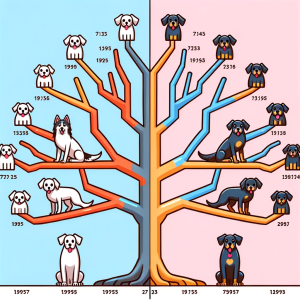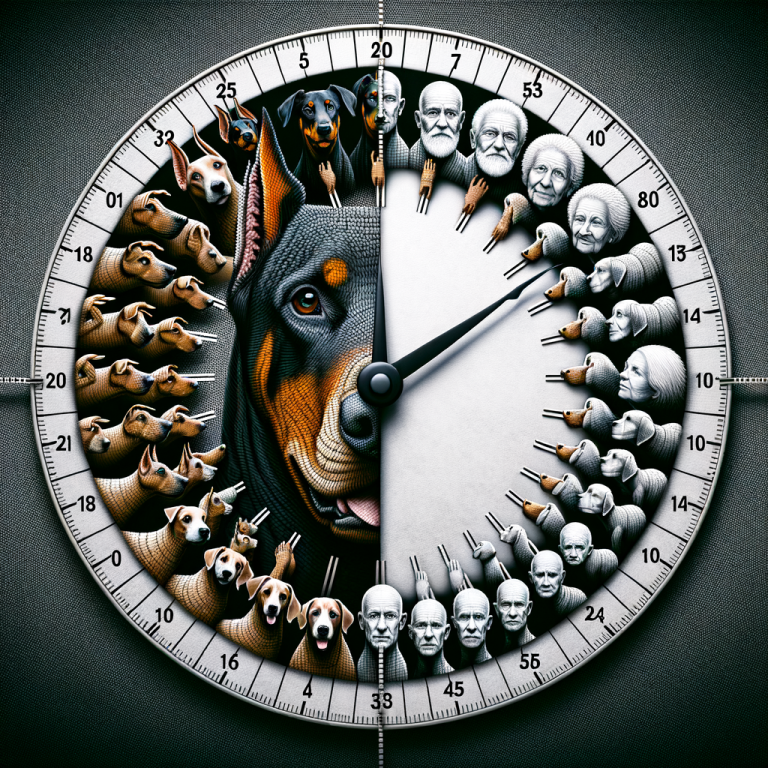Understanding Dog Years
Have you ever wondered how dog years compare to human years? The concept of “dog years” has been around for centuries, but do you know how it actually works? Let’s dive into the aging process of dogs compared to humans and explore the factors that influence it.
Understanding Dog Years Compared to Human Years
Discover the fascinating comparison between the aging process of dogs and humans, and how it relates to their weight and height. Gain insights into the unique perspective of time and aging in different species, and how it can help us appreciate the diversity of life on Earth.
Understanding Dog Years
When it comes to understanding the concept of “dog years” compared to human years, it’s important to consider the aging process in dogs and how it differs from that of humans. Here are some key points to consider:
Explanation of the Aging Process
Dogs age at a different rate compared to humans due to various factors such as genetics, size, and breed. While the aging process in dogs is not linear, it can be roughly estimated that one dog year is equivalent to 7 human years. However, this can vary based on the size and breed of the dog.
Factors Influencing the Aging Process
Several factors influence the aging process in dogs, including genetics, diet, exercise, and overall health. These factors can impact the rate at which a dog ages and can vary from one dog to another.
Comparison of Average Lifespan
On average, dogs have a shorter lifespan compared to humans. While the average lifespan of a dog can vary based on factors such as size and breed, it generally ranges from 10 to 13 years. In comparison, the average lifespan of a human in the US is around 78.7 years (83.3 years in the EU).
Understanding these factors is crucial in determining the age of a dog in “dog years” and providing appropriate care for aging dogs.
Calculating Dog Years
When it comes to understanding the aging process in dogs compared to humans, the concept of “dog years” naturally comes into play. Calculating a dog’s age in “dog years” is a common practice, but it’s important to understand the different methods and factors involved in this calculation.
Common Method for Calculating Dog Years
The most common method for calculating dog years is to use the 1:7 ratio, where 1 human year is equivalent to 7 “dog years.” This method is a simple way to estimate a dog’s age in relation to human age, but it may not be entirely accurate for all dogs.
Comparison of Different Methods
While the 1:7 ratio is widely used, there are other methods for calculating dog years that take into account the varying aging rates of different dog breeds. Some experts suggest using a 1:5 ratio for small breeds and a 1:9 ratio for larger breeds to more accurately estimate their “dog years” age.
Factors to Consider
When determining a dog’s age in “dog years,” it’s important to consider factors such as breed, size, and overall health. These factors can significantly influence the aging process in dogs and may require adjustments to the standard 1:7 ratio for a more accurate calculation.
Understanding the various methods and factors involved in calculating dog years can provide a more comprehensive perspective on the aging process in dogs compared to humans.
Age-Related Health and Behavior in Dogs
When considering the concept of “dog years” compared to human years, it’s important to understand the age-related health and behavior differences between dogs and humans. Here are some key points to consider:
Comparison of Age-Related Health Issues
- Dogs age at a faster rate than humans, experiencing age-related health issues earlier in life.
- Common health issues in aging dogs include arthritis, dental problems, and cognitive decline.
- Humans tend to experience similar health issues later in life compared to dogs.
- Regular veterinary check-ups and proper care are essential for maintaining the health of aging dogs.
Behavioral Changes in Dogs
- As dogs age in “dog years,” they may exhibit changes in behavior such as decreased activity, increased sleep, and potential cognitive decline.
- Humans also experience behavioral changes as they age, but the timeline for these changes differs from that of dogs.
- Understanding the behavioral changes in aging dogs can help owners provide appropriate care and support for their pets.
Tips for Caring for Aging Dogs
- Provide a balanced diet tailored to the specific needs of aging dogs.
- Ensure regular exercise and mental stimulation to support overall well-being.
- Make adjustments to the home environment to accommodate the changing needs of aging dogs, such as providing comfortable bedding and easy access to food and water.
- Consult with a veterinarian for guidance on managing age-related health issues and behavioral changes in dogs.
By understanding the age-related health and behavior differences between dogs and humans, pet owners can provide the best possible care for their furry companions as they age in “dog years.”
 Cultural and Historical Significance
Cultural and Historical Significance
Exploring the cultural and historical significance of the concept of “dog years” compared to human years can provide valuable insights into the perception and treatment of aging dogs.
Examples in Popular Culture and Media
The concept of “dog years” compared to human years has been widely used in popular culture and media, shaping the way people understand and relate to aging dogs. Some examples include:
- References in literature, movies, and television shows that depict dogs aging at a different rate than humans
- Use of “dog years” as a metaphor for the passage of time and the aging process
- Marketing and advertising campaigns that leverage the concept of “dog years” to promote products and services for aging dogs
Impact on Perception and Treatment of Aging Dogs
The concept of “dog years” has had a significant impact on how aging dogs are perceived and cared for in various cultures. This includes:
- Recognition of the importance of providing age-appropriate care and support for aging dogs based on their “dog years” age
- Increased awareness of age-related health issues in dogs and the need for preventive care and early intervention
- Shift in attitudes towards aging dogs, with a greater emphasis on promoting their well-being and quality of life
Understanding the cultural and historical significance of “dog years” compared to human years can enhance our appreciation for the unique aging process of dogs and the ways in which they are valued and cared for in society.
Conclusion
After exploring the concept of “dog years” and comparing it to human years, it is evident that this idea has significant relevance in understanding the aging process in dogs. By considering the factors that influence the aging process in dogs and comparing their average lifespan to that of humans, we can gain valuable insights into how to care for aging dogs.
Throughout this article, we have delved into the aging process in dogs and the various methods for calculating their age in “dog years.” We have also examined age-related health and behavioral changes in dogs, drawing comparisons to the aging process in humans. By doing so, we have highlighted the importance of understanding the concept of “dog years” in providing appropriate care for aging dogs.
Furthermore, we have explored the cultural and historical significance of “dog years,” noting its impact on the perception and treatment of aging dogs. This concept has been widely used in popular culture and media, further emphasizing its relevance in our understanding of the aging process in dogs.


Comments are closed.